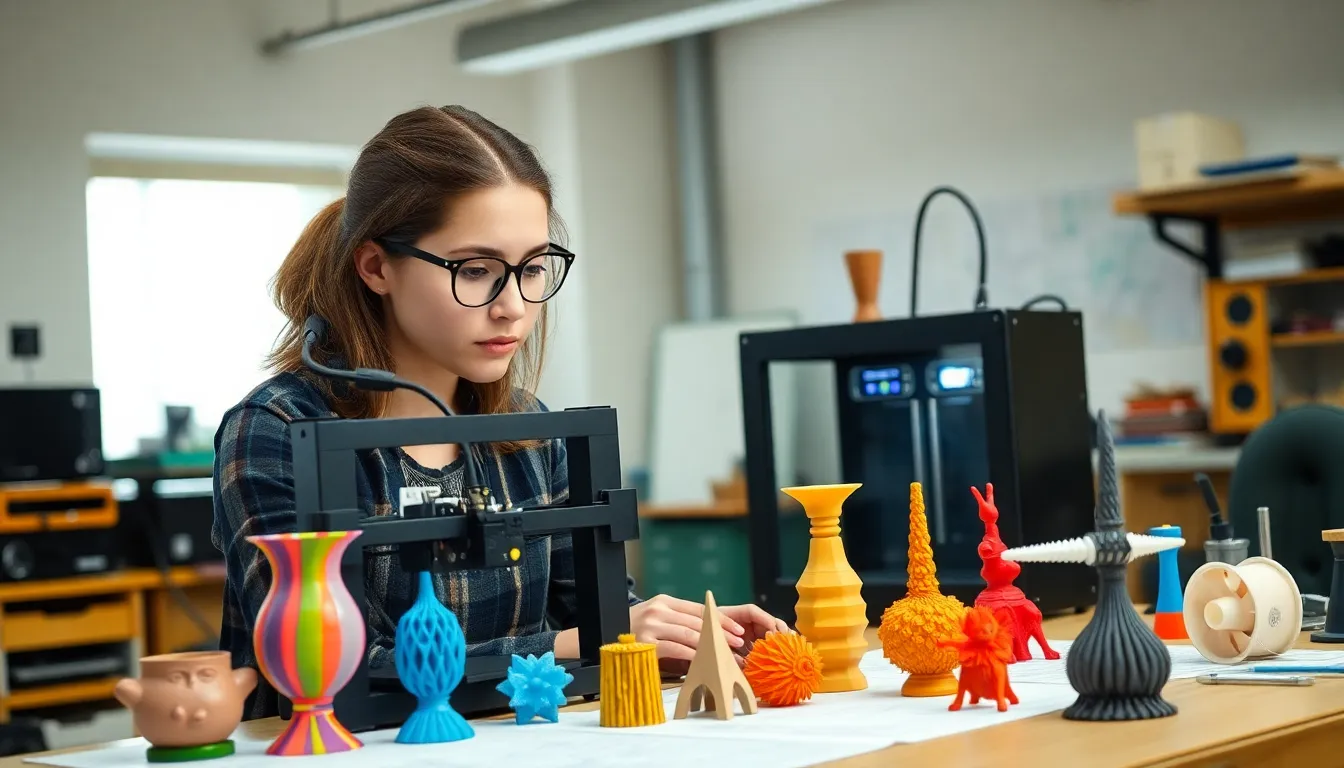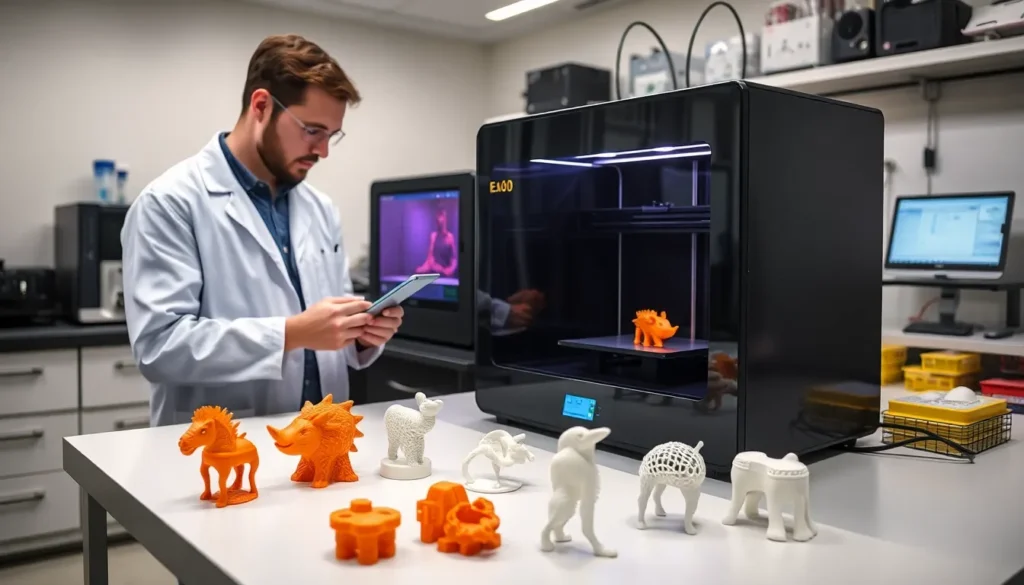In today’s fast-paced digital landscape, user-centric no-code tools are transforming how individuals and businesses create applications. These innovative platforms empower users with little to no programming experience to design and deploy solutions tailored to their unique needs. By simplifying the development process, they enable users to focus on their ideas rather than getting bogged down by technical complexities.
As more people recognize the potential of no-code tools, the demand for user-friendly, intuitive interfaces continues to rise. This shift is not just about democratizing technology; it’s about fostering creativity and accelerating innovation across industries. With user-centric design at the forefront, these tools are bridging the gap between technical and non-technical users, making it easier than ever to bring ideas to life.
Table of Contents
ToggleOverview Of User-Centric No-Code Tools
User-centric no-code tools revolutionize application development by offering intuitive interfaces that cater to non-technical users. These platforms enable individuals and organizations to design and deploy customized solutions without extensive programming knowledge. Highlighted below are key features and benefits of these tools:
- Intuitive Design: User-friendly interfaces facilitate guided workflows, simplifying the development process for users across various skill levels.
- Rapid Prototyping: Users can quickly build prototypes, allowing for faster feedback cycles and iterations, which leads to more refined applications.
- Cost-Effective Solutions: Eliminating the need for hiring expensive developers reduces overall project costs, making technology more accessible to small businesses and startups.
- Customization Options: Users can tailor applications to specific needs through drag-and-drop features, flexible templates, and customizable components.
- Collaboration Tools: Built-in collaboration features enable teams to work together seamlessly, ensuring alignment and improved project outcomes.
As demand for these tools rises, industries experience a surge in innovative solutions that reflect user perspectives. Enhanced creativity emerges as non-developers contribute unique ideas, bridging technological divides and enhancing digital transformation. Through user-centric no-code tools, the development landscape shifts to prioritize empowerment and accessibility.
Key Features Of User-Centric No-Code Tools

User-centric no-code tools include several essential features that enhance user experience and foster creativity. These features empower users to build customized applications without extensive programming knowledge.
Drag-And-Drop Interfaces
Drag-and-drop interfaces simplify the process of application development. Users can easily select components and place them on the design canvas, streamlining workflows. These interfaces facilitate quick adjustments, allowing users to visualize their ideas instantly. With intuitive layouts, individuals can create complex applications quickly without coding expertise.
Customization Options
Customization options are crucial in tailoring applications to specific needs. User-centric no-code tools provide a wide range of templates, styles, and functionalities. Users can modify colors, fonts, and layouts to align with branding requirements. This flexibility ensures that applications not only function effectively but also resonate with target audiences.
Integration Capabilities
Integration capabilities enhance the functionality of user-centric no-code tools. These platforms often include APIs that connect with existing software, databases, and services. Users can seamlessly integrate third-party applications to expand their tools’ features. Enhanced integration allows for a cohesive ecosystem, crucial for efficient data management and process automation.
Benefits Of Using User-Centric No-Code Tools
User-centric no-code tools offer numerous advantages that foster creativity and streamline processes. These benefits include increased accessibility, enhanced collaboration, and faster prototyping.
Increased Accessibility
Increased accessibility enables a broader range of users to participate in application development. Non-technical users can leverage intuitive interfaces to create solutions that address their specific needs. Platforms often feature user-friendly design elements that require minimal training, allowing immediate engagement. This democratization of technology removes barriers and empowers individuals from various backgrounds to bring their ideas to fruition.
Enhanced Collaboration
Enhanced collaboration strengthens teamwork and drives innovation. User-centric no-code tools often provide shared workspaces, allowing multiple users to contribute simultaneously. Real-time collaboration features facilitate communication and streamline feedback, ensuring that all stakeholders can participate in the development process. Effective collaboration tools promote a shared vision, while collective inputs reflect diverse perspectives that enrich the final product.
Faster Prototyping
Faster prototyping accelerates the development cycle, leading to quicker implementation of ideas. Users can create and modify prototypes rapidly, validating concepts through immediate testing and feedback. This iterative process shortens timeframes, allowing developers to refine solutions based on real user insights. Consequently, the alignment of end products with user needs becomes more precise, enhancing overall satisfaction with the final application.
Popular User-Centric No-Code Tools
Several user-centric no-code tools stand out in the market, each offering unique features that cater to diverse needs. Below are two notable tools that exemplify the benefits of no-code solutions.
Tool 1: Overview
Bubble allows users to create fully functional web applications without extensive coding knowledge. Its drag-and-drop interface simplifies the development process, enabling users to design responsive web layouts quickly. Bubble supports backend functionality, making it possible to build sophisticated applications with databases and user authentication. The platform’s flexibility accommodates various use cases, from e-commerce sites to social networks.
Tool 2: Overview
Airtable combines the power of a spreadsheet with a user-friendly database. It features customizable templates that help users organize projects, track inventory, or manage customer relationships effortlessly. Airtable’s collaboration tools allow teams to work together in real time, ensuring everyone remains on the same page. Integration with popular services, like Slack and Google Drive, enhances its functionality, enabling seamless workflows and data sharing across platforms.
User-centric no-code tools are transforming the way individuals and businesses approach application development. By prioritizing accessibility and creativity they empower users to bring their ideas to life without the need for extensive technical knowledge. The rise of these platforms not only enhances collaboration but also accelerates the prototyping process leading to innovative solutions that meet real user needs.
As the demand for intuitive design and customization continues to grow these tools are likely to play an even more significant role in the digital landscape. Embracing user-centric no-code solutions can unlock new possibilities for innovation and streamline workflows across various industries. The future of application development is here and it’s more inclusive than ever.













